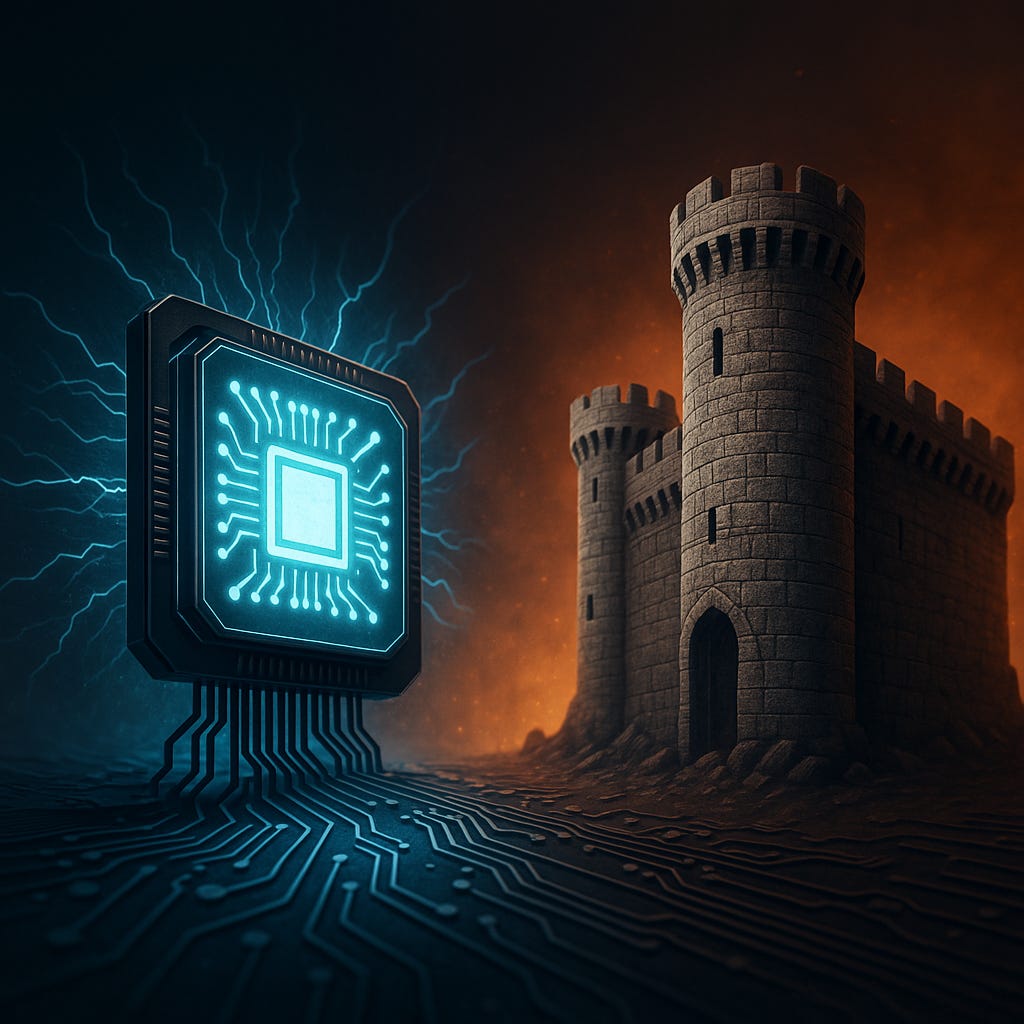AWS vs. Nvidia: How Amazon could Pull the Plug on the GPU Monopoly
Whoever Controls the Chips, Controls the Intelligence
Most people still associate "chips" with whatever powers their laptop, smartphone, or maybe their Tesla. But since the AI explosion of 2022/23, a different kind of battleground has emerged — one that remains largely invisible to the public, but shapes nearly every digital interaction we now have: the datacenter. It’s where ChatGPT, Claude, Gemini, and other large AI models are trained, hosted, and deployed.
What most people don’t realize: artificial intelligence doesn’t just rely on code — it’s bound to the hardware it runs on. And for the past few years, there’s been only one true god in this space: Nvidia.
With its high-performance GPUs, Nvidia built a near-monopoly on AI compute. No GPT-4o, no Midjourney, no Gemini would have existed without Nvidia’s silicon.
Or rather — that used to be the case.
Because something is happening now that may quietly rewrite the power structure of the AI economy: Amazon, best known for e-commerce and cloud hosting, is building and deploying its own chips — and not as a side project, but at a scale that directly threatens Nvidia’s dominance.
What looks like just another tech update is, in truth, a direct assault on the monopoly that has so far defined the infrastructure of artificial intelligence.
Amazon’s Move: Vertical Control Instead of Expensive Dependency
Graviton, Trainium, and a Game-Changer Called Project Rainier
Graviton4 (CPU):
600 Gbit/s of network bandwidth
Ideal for high-parallelism inference workloads
AWS calls it “100 CDs per second” in data transfer
Trainium2 (AI Accelerator):
Used to train Claude 4 by Anthropic
Over 500,000 chips deployed in Project Rainier
More affordable than Nvidia GPUs — for many, the first viable large-scale training alternative
Trainium3 (coming ~ 2025-2026):
2× performance over Trainium2
50% less energy consumption
Shifts focus from raw FLOPS to total cost of ownership (TCO)
Nvidia Under Pressure — Short, Mid, and Long-Term Impacts 📉
1. Short Term (Next 12 Months)
Price pressure: AWS offers training up to 40% cheaper than Nvidia-based setups
Framework agnosticism: PyTorch 2.x, ONNX, and others reduce reliance on CUDA
Market psychology: Every successful “non-Nvidia” training run sends a shockwave through Nvidia’s pricing power
2. Mid-Term (18–36 Months)
Custom silicon becomes the default: Google (TPUs), Microsoft (Maia), Meta (MTIA) — all racing to build their own chips
Vertical integration beats chip specs: AWS offers the chip, the cloud, the tools, and the models. Nvidia offers just the chip.
Energy efficiency as leverage: In a world of energy constraints, a 50% power cut isn’t a feature — it’s economic leverage
3. Long Term (2027+)
The new rule: own the stack, own the future
Whoever owns silicon, software, and customer interface will set the rules of the game.Nvidia as a premium niche player? Possible. Technologically superior, but squeezed on price and scale.
Market share will shift: First forecasts predict Nvidia could fall below 60% share in AI infrastructure by decade’s end
What Nvidia Still Has
Software stronghold: CUDA, cuDNN, TensorRT — years of R&D baked into the global AI ecosystem
Tech edge: Blackwell is unmatched in raw power — if Nvidia can deliver at scale
Strategic markets: Nvidia still dominates regions and verticals where custom chips aren’t feasible or allowed
But all of this may not be enough. If AWS can train models like Claude 4 on its own hardware — with comparable performance and lower cost — then Nvidia’s status as AI’s default supplier begins to erode.
The End of the AI Monoculture
Amazon hasn’t just built a cheaper chip. It has proven that frontier-scale AI doesn’t have to run on Nvidia. And in a world where AI is becoming the foundational layer for everything — from medicine to logistics to defense — that’s not a technical footnote, it’s a geopolitical rupture.
The question is no longer if Nvidia will be challenged.
It’s how much it will lose over the next five years.
Bottom Line:
2024 was the year of the GPU shortage.
2025 marks the shift toward a vertically controlled, de-monopolized AI infrastructure — not through open source idealism, but through full-stack consolidation.


